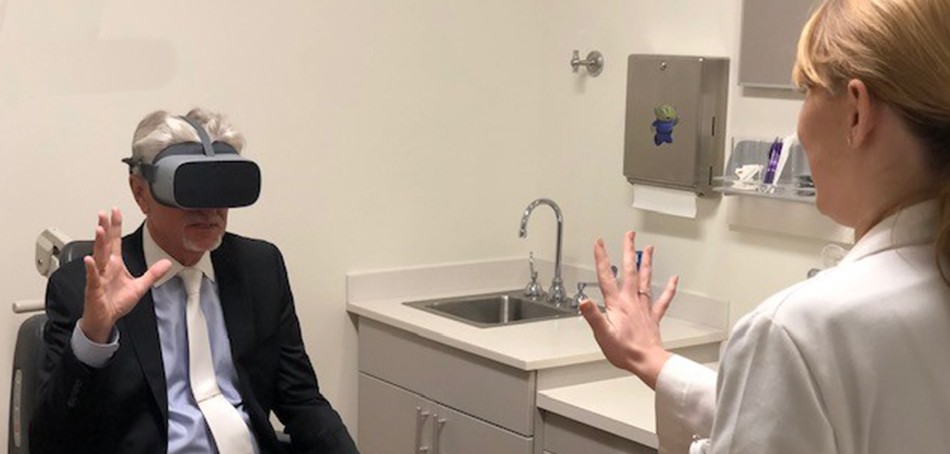Macular degeneration is the leading cause of vision loss, affecting more than 10 million Americans. A deterioration in the central portion of the retina causes this incurable eye disease. A part of the retina called the macula is damaged, no longer able to focus the central vision of the eye. This makes it unable to read, drive a car, recognize faces and colors, and see objects in fine detail. Many older people develop macular degeneration as part of the body’s natural aging process. The exact cause is unknown, but the condition develops as the eye ages.
What is Macular Degeneration
What is Macular Degeneration?

Dry Macular Degeneration – Atrophic
80-90% of people with AMD are affected by the dry type, it’s cause is unknown and tends to progress slower than the wet type. Drusen, small white or yellowish deposits, form on the retina beneath the macula causing it to deteriorate over time. As of now there is no approved treatment or cure for this.
Low Vision Symptoms:
- An overall haziness over your vision
- Text is seen as blurry
- Recognizing people’s faces becomes difficult
- A brighter light than normal is needed when reading
Wet Macular Degeneration – Neovascular, Exudative
The wet (neovascular) type accounts for 10-15% of age-related macular degeneration, accounting for 90% of severe vision loss from the disease. Abnormal blood vessels under the retina begin to grow toward the macula. The new blood vessels are abnormal, in which they break, bleed, and leak fluid. The macula begins to lift up and pull away from its base, damaging it. This causes the central area of vision to have rapid and severe loss.
Low Vision Symptoms:
- A lessening of intensity or brightness in colors
- The symptoms worsen rapidly
- In the field of vision is a blurry or blind spot
- Central vision is reduced in one or both of the eyes
- Hallucinations occur
CONTROLLABLE RISK FACTORS
- Smoking: People who smoke have 2-3 times higher risk than someone who does not smoke.
- Obesity: The chances of developing age-related macular degeneration may increase if someone has a higher BMI (body mass index) of 30 or greater.
- Diet: A poor diet high in processed foods and saturated fats can increase the risk.
- Exercise: An inactive lifestyle contributes to the disease.
- Cholesterol: The eyes are affected by high cholesterol, leading to greater risk.
UNCONTROLLABLE RISK FACTORS
- Genetics: Age-related macular degeneration is 3-4 times higher if you have a parent or sibling with the condition.
- Gender: Females are more likely than men to have age-related macular degeneration.
- Race: Caucasians have a higher risk factor than any other race.
- Eyecolor: People with blue eyes are the most likely to develop age-related macular degeneration.
- Age: In people who are 65 or older the disease is most common.

Glasses for Early Stages of Macular Degeneration
As eye conditions worsen due to macular degeneration, normal low vision glasses are no longer as effective as they used to be. Words become blurred and faces appear fuzzy, a dark or blank spot in the center of vision hinders their capacity to see. Everyday tasks become difficult and enjoyable events, such as attending an art exhibit at a local gallery are not as enjoyable as they used to be. Seeing far and seeing near becomes a challenge.
With a lack of vision and no cure, people wonder what options they have for sight with normal eyeglasses no longer being effective. The answer is available in the form of NuEyes ODG smart glasses for low vision caused by early stages of macular degeneration.
Allows you to see
- A feature of autofocus switches between ranges according to tasks to simulate human eyes.
- Short-range vision allows reading small text and seeing up close. Mid-range vision will help in seeing faces or watching TV.
- Long-range vision allows sight for far away, such as looking outside a window.
- The world is brought closer to you in the low vision glasses by two computer screens at the same time looking into your eyes.
- You can tell the low vision glasses to make things bigger or smaller based on your needs.
- It takes the world that’s out there and puts it right in front of you!
Allows more freedom
- A hands-free device allows use of both hands while the low vision glasses enable vision.
- The head-worn display for low vision is voice activated, has an adjustable HD camera, wireless battery powered, voice activated, and is able to browse the web, emails, and social media.
- Michael A. Samuel, a retina specialist, says, “A device like this allows them to take this technology outside of the home to places they want to go. It expands their ability to live their life a little bit more than they did before.”
- This wearable technology is the future for patients with low vision, allowing them the ability to see in stores, restaurants, and anywhere they wish to go.
Early Stages of Macular Degeneration
- An HD digital camera mounted on the centre bridge of eyeglass frames to stream images to built-in 3D stereoscopic HD display lenses.
- An LED light helps to see in dark environments
- A touch interface on the temples with haptic feedback
- Autofocusing high definition optics
- Bluetooth, Wi-Fi, and GPS sensor
- Magnification up to 12x
- Barometric pressure and humidity sensors
